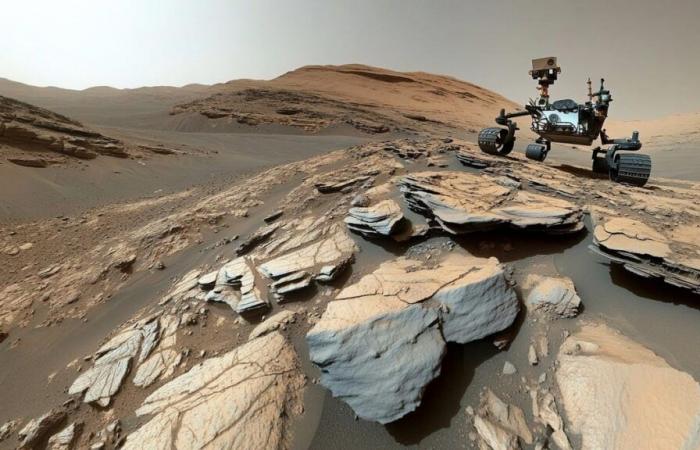
News JVTech We had indications that there was a large ocean on Mars. The Chinese rover Zhurong has just found the coast
Published on 11/23/2024 at 10:20
Share :
Mars, the red, arid and icy planet, has fascinated humanity for decades. If today its tenuous atmosphere and its hostile environment seem incompatible with life, numerous clues suggest a radically different past. The hypothesis of a vast ocean covering a significant part of the northern Martian hemisphere billions of years ago is being strengthened thanks to recent discoveries by the Chinese rover Zhurong.
A major discovery
Zhurong, the first Chinese rover to set foot on Martian soil as part of the Tianwen-1 mission, landed in May 2021 south of Utopia Planitia. This immense plain, located in the northern hemisphere, is a strategic location for Martian exploration and has already been studied by previous missions, notably NASA's Viking 2 probe in the 1970s. If China is recognized for its spectacular advances in lunar exploration, particularly on the far side, it is also establishing itself as a major player in planetary exploration, contributing significantly to our understanding of Mars thanks to the data collected by Zhurong.
A team of researchers from the Hong Kong Polytechnic University recently analyzed in detail the topography of the region explored by Zhurong. By combining data from orbital probes with direct observations from the rover, they identified geological formations characteristic of an ancient coastline. Cones with craters, sedimentary channels and traces of erosion by flows, all clues which testify to a past presence of abundant liquid water. The cones, potentially ancient mud volcanoes, are typically associated with areas rich in groundwater or ice. As for the channels and traces of erosion, they appear to be the result of freezing and thawing cycles, also characteristic of a water-rich environment.
Analysis of sedimentary strata by Zhurong radar
and counting impact craters make it possible to estimate the age of these formations. The researchers hypothesize that the region would have been home to a vast ocean around 3.68 billion years ago, an ocean that would have disappeared some 260 million years later. Their model describes an ocean divided into two distinct zones: a shallow part in the south and a deeper zone in the north, the latter of which can reach up to 600 meters deep, even in its shallowest part. The study suggests that this Martian ocean could have frozen quickly, forming thick layers of ice that eventually disappeared, likely due to global climate change.
Mars was habitable
These discoveries strengthen the hypothesis of a once habitable Mars. The presence of liquid water is a key element for the development of life as we know it. If the existence of liquid water on Mars in the distant past is increasingly probable, the question of the appearance of life on the red planet remains open. The data collected by Zhurong complements observations from previous missions, providing a more precise and detailed view thanks to its advanced instruments and strategic position within Utopia Planitia.
The study of this region
which extends over millions of square kilometers, is essential for reconstructing the geological and climatic history of Mars.
Currently, only the United States and China operate active rovers on the surface of Mars. Europe, the United Arab Emirates and India have also joined the race for Martian exploration with probes in orbit. International collaboration is more necessary than ever to unlock the secrets of the red planet. Understanding the evolution of Mars, its transition from a potentially habitable environment to a frozen desert, is crucial. It will not only allow us to learn more about the history of our solar system, but also to better understand the challenges linked to climate change on Earth and to avoid reproducing, on our scale, the fate of our Martian neighbor. The future of Martian exploration lies in cooperation and knowledge sharing, to piece together the complex puzzle of Mars' past and learn valuable lessons for the future of our own planet. The quest for answers about Mars' past habitability continues, and each new discovery brings us one step closer to the truth.





